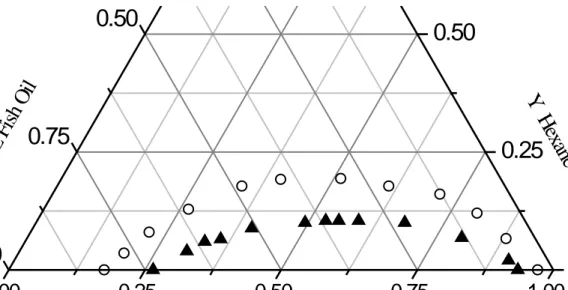Liquid–liquid equilibrium for ethanolysis systems of fish oil
Texto completo
Figure




Documento similar
The designed hybrid liquid desiccant system (HLDS) is comprised by a liquid desiccant system (LDS) whose main components are the absorber, regenerator and liquid-liquid heat
Determination of phenols in environmental water samples by ionic liquid-based headspace liquid-phase microextraction coupled with high-performance liquid chromatography.
Removal/generation of chemical species upon anaerobic digestion of the liquid fraction from hydrothermal carbonisation of sewage sludge for samples at IC 1 and every inoculum..
BACKGROUND: In this work three different techniques were applied to extract dry leaves of spinach (Spinacia oleracea): solid-liquid extraction (SLE), pressurized liquid
In this work, a systematic experimental and theoretical analysis of the vapor-liquid equilibrium of {aromatic hydrocarbon (toluene) + ionic liquid} binary mixtures
Even though a large amount of 3 He is needed for the density in the outer shell of the mixed droplet to reach the bulk liquid 3 He value, our results indicate that the spectrum of
Figure 3.8: RMSE between the historical and the estimated OD matrix, and RMSE between the observed and the estimated traffic counts, for the different methods, and using the LD
The present work studies the use of white oil industry wastewater as direct feedstock in MFCs. MFC systems incorporated an ionic liquid membrane based on
